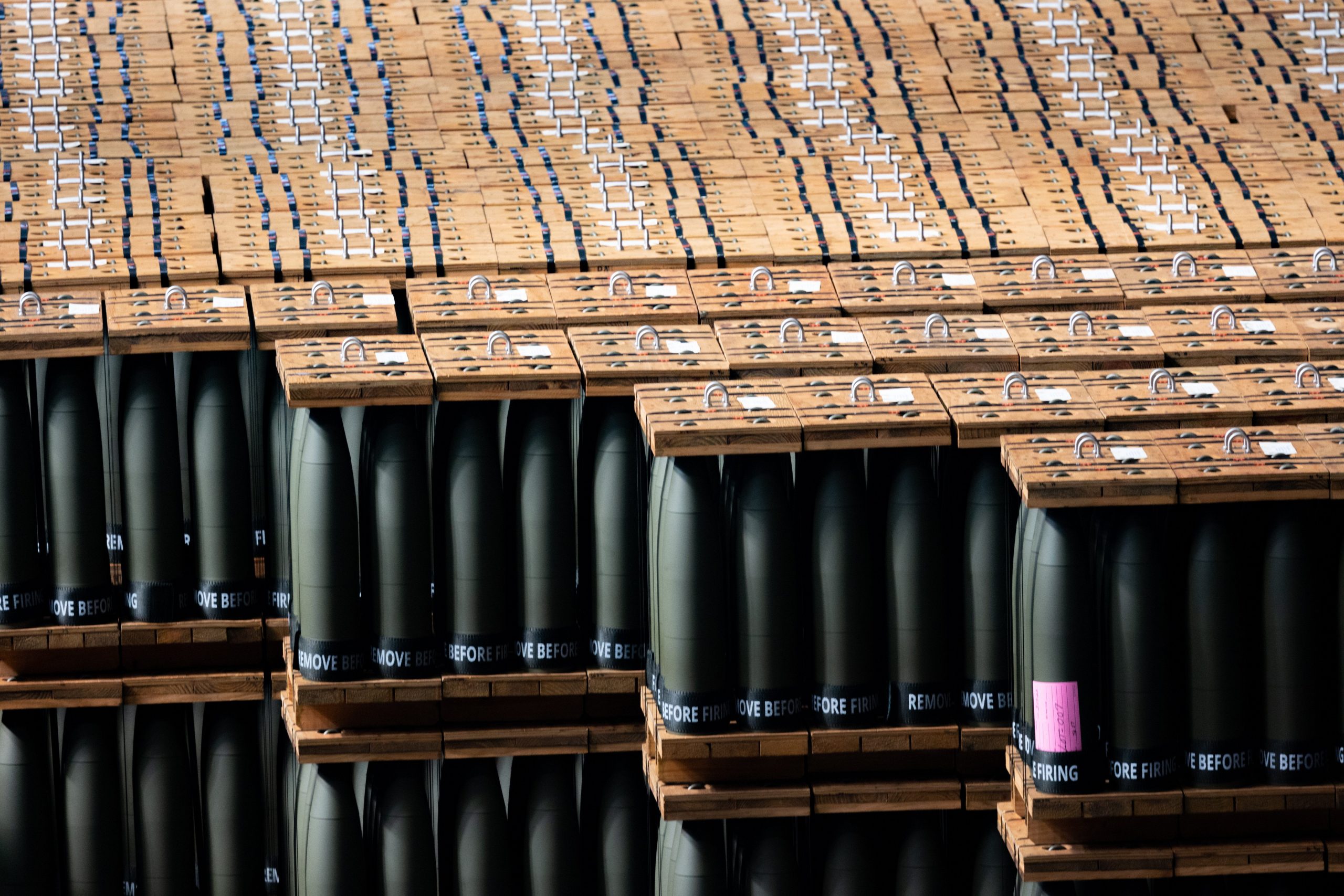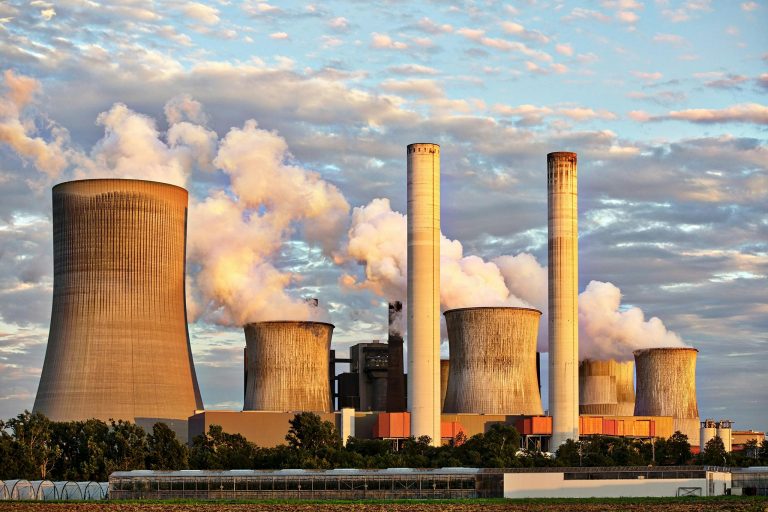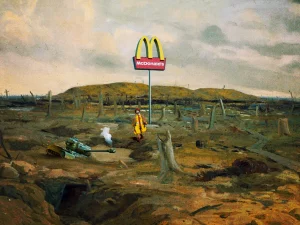By Brendan McLean, Security Editor
The Price of Peace: NATO's Rearmament Dilemma
This decade has been the most challenging toforNATO since the Cold War. The question remains, how should it tackle rearmament?

The 24th of February 2022, and its prelude, stands as the most pivotal point in the decade for NATO thus far. Overnight, an eight-year ‘forever war’ in the Donbass region of Ukraine became front-page news, as Russia launched its full-scale invasion. The worst fears of NATO and Ukrainian leadership were realised. Gone was the facade of untenable demands, disguised as Russian diplomacy,[1] replaced by what can only be described as neo-imperial ambitions. Three years later, the war continues to grind on, albeit with a significant amount of diplomatic effort being made to secure either a ceasefire or an outright end to the conflict. In this time, the global image of Russia fielding the ‘second best military in the world’[2] has been shattered, with the country suffering an estimated 1 million battlefield casualties since the war began.[3] And while sanctions continue to cripple the Russian economy, they haven’t ceased to be a threat. The inherited military-industrial complex of the Soviet Union has gradually restarted in its modern-day successor. Comparatively, NATO’s military-industrial complex has not- at least not at the rate it should have to counteract. Despite providing military aid to Ukraine for the last three years—in the form of tanks, artillery, aircraft and ammunition—production of such material across the alliance has mostly remained at peacetime levels, up until very recently. With the future of the war and the security of the continent remaining uncertain, the need to continue arming Ukraine and refilling our own stockpiles couldn’t be clearer. Therein lies the dilemma this short article will explore: bolstering NATO’s deterrence through rearmament seems like the obvious solution. But why has the uptake on action been so slow, and can the price really be justified?
Since the end of the Cold War, NATO countries had largely embraced the peace and post-war optimism that dominated the 1990s and early 2000s. The collapse of the Warsaw Pact, withdrawal of Russian troops from the former Eastern Bloc and the perceived democratisation of Russia itself signalled the end of NATO’s traditional adversary. Cooperation and diplomacy were more favoured in the emerging international climate; the need to maintain the high defence spending of a ‘bygone era’ seemed nonsensical. Subsequently, many countries slashed military budgets.[4] Unfortunately, things have drastically changed for the worse over the last thirty years. The hopes for a positive relationship with Russia gradually diminished over the years: the 2008 invasion of Georgia, the 2014 annexation of Crimea and ultimately the invasion of Ukraine in 2022, resulting in the NATO-Russia Council being declared defunct.[5] Arguably, the signs of Russian aggression have always been there, but were conveniently (or naively) ignored in favour of diplomacy. The war in Ukraine has fed into this, developing a dangerous complacency amongst NATO members who believed they had more time to rearm[6] whilst the war dragged on and ‘weakened’ Russia. This cannot be guaranteed in the long term, with increasing intelligence reports indicating a likelihood that Russia might be preparing to strike the Baltics,[7] despite its battlefield struggles in Ukraine. It is undeniable that rearmament, both nuclear and conventional, will be incredibly expensive to undertake; however, this pales in comparison to the cost of a full-scale conflict, which will be much higher. As the Secretary General of NATO, Mark Rutte, summarised in a speech in Brussels in December of 2024, ‘If we don’t spend more together now to prevent war, we will pay a much, much, much higher price later to fight it. Not billions, but trillions of euros. That’s if we come out on top…and that’s if we win.’[8] Rearmament and the costly bill that accompanies it are vital for continued deterrence against Russian aggression. Put simply, a well-armed Europe can project the image of a strong Europe and one that is likely to inflict a significant amount of damage to Russia, were it to attack: the core basis of deterrence. Combined with Russia’s heavy losses in Ukraine, it might just be enough to maintain peace as we know it; a worthy price to pay.
With any theoretical cost-benefit analysis indicating the sensibility of spending now to avoid spending much more on war later, one ought to question why NATO has been so slow in tackling the rearmament issue. Three years of war has seen NATO allies donating and selling stockpiles of equipment to Ukraine in an effort to keep them in the fight, limited by the shortfalls within their own stockpiles and the production capabilities of European defence contractors. Part of the problem lies in how equipment is procured and produced within Europe, with issues such as materials shortages[9] and supply chain complexities[10] leading to delays and less efficient outputs. For years, the concept of ‘Just in Time’ delivery had been enough to suffice the dwindling orders for vehicles and ammunition placed by European countries, allowing producers to predict and subsequently cater as was needed rather than ordering and stocking up on production resources in bulk. The shocks of the Covid pandemic and the war in Ukraine have revealed the inefficiencies of such a system, stressed further by the massive orders placed in the wake of the conflict.[11] A further issue defence contractors must contend with is the relatively small production base so many of them operate upon. Production of weapon systems, especially with the technological advancements of the last 20 years, tends to be highly specialised and thus, expensive.[12] To put this into perspective, in 2022, Lockheed Martin’s factory produced and delivered 169 F-35s over the course of the year, against a backlog of approximately 3200 orders. This output is rather abysmal when compared to commercial manufacturing such as Boeing, who were able to produce 31 737 Max airframes a month in the same year.[13] Defence production lines, rather counterintuitively, are currently not set up to ‘produce at speed or scale’.[14] The infrastructure, materials and staff to support a sudden expansion do not exist, and the equipment used to manufacture precision weapons are often configured for limited series production, rather than mass production.[15] In short, the manufacturing process at its core needs an overhaul. By contrast, the Russian military industrial complex has been quite easily able to scale up over the course of the conflict and does not suffer quite the same problems currently inhibiting the west. Operating under a ‘Kalashnikov Economy’,[16] The Russian state had subsidised its defence industry, (often at a loss over the years) to maintain the flexibility and spare production output up until the start of the war.[17] The investment paid off, with the sector expanding rapidly in both production and workforce numbers, fuelled further by 7.5% of Russia’s GDP allocated to defence spending.[18] Despite the combined GDP of NATO being 25 times larger than Russia’s, estimates indicate the country outputting 4 times as much ammunition as NATO at the moment, although the gap is closing.[19] In an effort to decrease the gap, ‘The European Commission [had] set a target to ramp up ammunition production to 2 million rounds per year in 2025, while the US [aimed] to hit a new target of 100,000 rounds per month by October.’[20] The turnaround is monumental, with some predictions estimating that European ammunition production could overtake Russia by 2026, and potentially rival China.[21] Production capacity has the potential to continue steady expansion through initiatives such as the European Defence Fund, in recognition of previous lax spending by the continent,[22] although other challenges still remain, with European NATO allies having ordered 1700 new armoured vehicles, including the new Leopard 2A8, for which the manufacturing capacity lines still remain limited.[23]
One other core issue lies with policy decisions and spending priorities; areas which may continue to bring about dialogue and reluctance to fully commit to the costly price of rearmament and the peace that exists with it. At a recent summit at the Hague, NATO members committed to spending 5% of their GDP on defence by 2035[24] – an astonishing rise from the previous 2% that so many member states have only just reached. The commitment comes at a time when many member states, especially in the EU are burdened by high national debts; ‘only Germany has historically had a rigorous fiscal policy, with a debt-to-GDP ratio below 100 (62.5 per cent)’[25] and even this was removed by a parliamentary vote in 2025.[26] This, tied with the expectation that government spending has to be reduced elsewhere, may be ‘indigestible for the publics in many EU countries’,[27] with many citizens likely to value quality over quantity spending in the face of education and healthcare budgets being eclipsed by defence.[28] The most vivid example of public backlash to higher defence spending was in Spain, who only just reached 2% spending this year, and even this was not without protest.[29] 5% was declared ‘incompatible with our world view’ by PM Sanchez, in the wake of a public spat with the US over spending targets. Whilst suggestions of increasing efficiencies and standardisation across European militaries to reduce wasteful spending has been put forward as a means of making such commitments more digestible,[30] the other issue of the necessary political willpower to maintain policy decisions still remains. Historically, countries such as the UK have struggled to maintain defence spending amidst the need for austerity, resulting in shifting policy across governing parties, at detriment to stockpiles and the Armed Forces.[31] Whilst the solution would be bipartisan commitments to security and defence spending, the political landscape across Europe has become increasingly more uncertain, shedding doubt on whether or not this is realistically feasible, especially in the longer term.
Conclusion
Despite setbacks and ill-placed trust and complacency stemming from the turn of the millenia, NATO is slowly making progress towards proper rearmament. Investments into supply chains and manufacturing are pouring in, production is on the rise, and stockpiles are slowly refilling and expanding. There are still practical issues that need to be worked out, such as supply chain bottlenecks and expansion of manufacturing, but long term financial and political commitment to rearmament will likely see these addressed. The bigger issue is that long term political will, with parties across Europe fighting an increasingly popular populist right wing that seeks to appeal to a largely disillusioned voter base, unhappy with a decline in quality and availability of education, welfare, healthcare and perceived inaction over the immigration crisis. The costly price tag of investing in defence can look unappealing when it comes at the cost of reduced budgets in other areas, especially those that directly appeal to the populous. There are some work arounds to make investment more efficient and subsequently reducing it, such as standardisation across the alliance, with common platforms increasing production efficiency and logistics whilst also reducing costs. However it cannot be denied that whilst it might not be a popular choice, defence spending to boost NATO rearmament is necessary. The price tag is high, but peace through deterrence continues to be the most effective way at protecting our way of life. When presented with the decision to pay now to deter conflict, or to pay much more later in the aftermath of a major conflict, the choice seems obvious.

Bibliography
- The Guardian. “Russia Issues List of Demands amid Tensions in Europe over Ukraine and NATO.” December 17, 2021. https://www.theguardian.com/world/2021/dec/17/russia-issues-list-demands-tensions-europe-ukraine-nato.
- Business Insider. “Blinken Slams Russia: Military ‘2nd Strongest’ in Ukraine.” June 2023. https://www.businessinsider.com/blinken-slams-russia-military-2nd-strongest-in-ukraine-2023-6.
- The Guardian. “One Million and Counting: Russian Casualties Hit Milestone in Ukraine War.” June 22, 2025. https://www.theguardian.com/world/ng-interactive/2025/jun/22/one-million-and-counting-russian-casualties-hit-milestone-in-ukraine-war.
- BBC News. “Why Did NATO Intervene in Libya?” March 2015. https://www.bbc.co.uk/news/magazine-31750929.
- ResearchGate. “Why NATO-Russia Council Has Failed after 20 Years of Existence.” Accessed September 14, 2025. https://www.researchgate.net/publication/365957417_WHY_NATO-RUSSIA_COUNCIL_HAS_FAILED_AFTER_20_YEARS_OF_EXISTENCE.
- GIS Reports. “Russia and the Baltics’ Security.” Accessed September 14, 2025. https://www.gisreportsonline.com/r/russia-baltics-security/.
- Politico. “Russia Could Be Ready for War with Europe within 5 Years, Danish Intelligence Warns.” February 2024. https://www.politico.eu/article/russia-war-threat-europe-within-5-years-danish-intelligence-ddis-warns/.
- NATO. “Remarks and Opinions.” Accessed September 14, 2025. https://www.nato.int/cps/en/natohq/opinions_231348.htm.
- Radio Free Europe/Radio Liberty. “Ukraine Needs More Weapons and Shells, EU Investigates War Supply.” Accessed September 14, 2025. https://www.rferl.org/a/ukraine-weapons-shells-european-union-eu-war-russia-investigation/33025300.html.
- RUSI. “Ramping Up: What Will It Take to Boost the UK’s Magazine Depth?” Commentary. Accessed September 14, 2025. https://www.rusi.org/explore-our-research/publications/commentary/ramping-what-will-it-take-boost-uks-magazine-depth#:~:text=Supply%20Chains%20and%20Dependencies,be%20expected%20to%20prioritise%20accordingly.
- European Security & Defence. “Just-in-Time Is Dead: How European Manufacturers Are Gearing Up for Land Warfare.” January 2025. https://euro-sd.com/2025/01/articles/42257/just-in-time-is-dead-how-european-manufacturers-are-gearing-up-for-land-warfare/.
- RUSI. “Ramping Up: What Will It Take to Boost the UK’s Magazine Depth?” Commentary. Accessed September 14, 2025. https://www.rusi.org/explore-our-research/publications/commentary/ramping-what-will-it-take-boost-uks-magazine-depth#:~:text=Supply%20Chains%20and%20Dependencies,be%20expected%20to%20prioritise%20accordingly.
- RUSI. “Ramping Up: What Will It Take to Boost the UK’s Magazine Depth?” Commentary. Accessed September 14, 2025. https://www.rusi.org/explore-our-research/publications/commentary/ramping-what-will-it-take-boost-uks-magazine-depth#:~:text=Supply%20Chains%20and%20Dependencies,be%20expected%20to%20prioritise%20accordingly.
- RUSI. “Ramping Up: What Will It Take to Boost the UK’s Magazine Depth?” Commentary. Accessed September 14, 2025. https://www.rusi.org/explore-our-research/publications/commentary/ramping-what-will-it-take-boost-uks-magazine-depth#:~:text=Supply%20Chains%20and%20Dependencies,be%20expected%20to%20prioritise%20accordingly.
- RUSI. “Ramping Up: What Will It Take to Boost the UK’s Magazine Depth?” Commentary. Accessed September 14, 2025. https://www.rusi.org/explore-our-research/publications/commentary/ramping-what-will-it-take-boost-uks-magazine-depth#:~:text=Supply%20Chains%20and%20Dependencies,be%20expected%20to%20prioritise%20accordingly.
- The Guardian. “Rate of Russian Military Production Worries European War Planners.” February 15, 2024. https://www.theguardian.com/world/2024/feb/15/rate-of-russian-military-production-worries-european-war-planners.
- The Guardian. “Rate of Russian Military Production Worries European War Planners.” February 15, 2024. https://www.theguardian.com/world/2024/feb/15/rate-of-russian-military-production-worries-european-war-planners.
- The Guardian. “Rate of Russian Military Production Worries European War Planners.” February 15, 2024. https://www.theguardian.com/world/2024/feb/15/rate-of-russian-military-production-worries-european-war-planners.
- Euronews. “Is Russia Producing a Year’s Worth of NATO Ammunition in Three Months?” July 16, 2025. https://www.euronews.com/my-europe/2025/07/16/is-russia-producing-a-years-worth-of-nato-ammunition-in-three-months.
- Euronews. “Is Russia Producing a Year’s Worth of NATO Ammunition in Three Months?” July 16, 2025. https://www.euronews.com/my-europe/2025/07/16/is-russia-producing-a-years-worth-of-nato-ammunition-in-three-months.
- United24 Media. “Europe’s Artillery Production Skyrockets, Poised to Overtake Russia and Rival China by 2026.” Accessed September 14, 2025. https://united24media.com/latest-news/europes-artillery-production-skyrockets-poised-to-overtake-russia-and-rival-china-by-2026-7873.
- European Parliament. “How Europe Can Live with NATO’s Defence Spending Target.” Briefing. 2023. https://www.europarl.europa.eu/RegData/etudes/BRIE/2023/749805/EPRS_BRI%282023%29749805_EN.pdf.
- Militär Aktuell. “Europe Modernizes Its Battle Tank Fleets.” Accessed September 14, 2025. https://militaeraktuell.at/en/europe-modernizes-its-battle-tank-fleets/.
- NATO. “NATO Topics.” Accessed September 14, 2025. https://www.nato.int/cps/en/natohq/topics_49198.htm.
- SIPRI. “NATO’s New Spending Target: Challenges and Risks Associated with the Political Signal.” Essay. 2025. https://www.sipri.org/commentary/essay/2025/natos-new-spending-target-challenges-and-risks-associated-political-signal.
- SIPRI. “NATO’s New Spending Target: Challenges and Risks Associated with the Political Signal.” Essay. 2025. https://www.sipri.org/commentary/essay/2025/natos-new-spending-target-challenges-and-risks-associated-political-signal.
- Bruegel. “How Europe Can Live with NATO’s Ill-Conceived Defence Spending Target.” First Glance. Accessed September 14, 2025. https://www.bruegel.org/first-glance/how-europe-can-live-natos-ill-conceived-defence-spending-target.
- Al Jazeera. “NATO Countries’ Budgets Compared: Defence vs Healthcare and Education.” June 25, 2025. https://www.aljazeera.com/news/2025/6/25/nato-countries-budgets-compared-defence-vs-healthcare-and-education.
- BBC News. “NATO: What Does It Do and How Much Do Members Spend?” July 2024. https://www.bbc.com/news/articles/ckg3082d3ero.
- Bruegel. “How Europe Can Live with NATO’s Ill-Conceived Defence Spending Target.” First Glance. Accessed September 14, 2025. https://www.bruegel.org/first-glance/how-europe-can-live-natos-ill-conceived-defence-spending-target.
- RUSI. “Ramping Up: What Will It Take to Boost the UK’s Magazine Depth?” Commentary. Accessed September 14, 2025. https://www.rusi.org/explore-our-research/publications/commentary/ramping-what-will-it-take-boost-uks-magazine-depth#:~:text=Supply%20Chains%20and%20Dependencies,be%20expected%20to%20prioritise%20accordingly.



